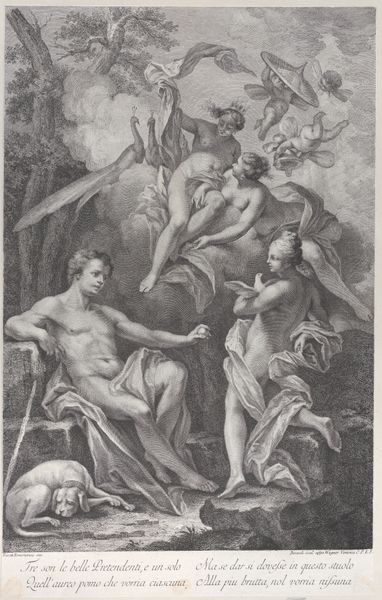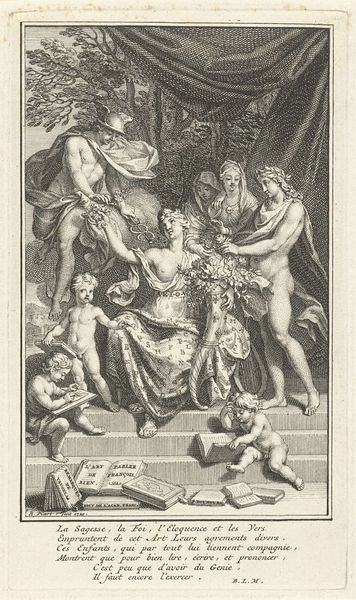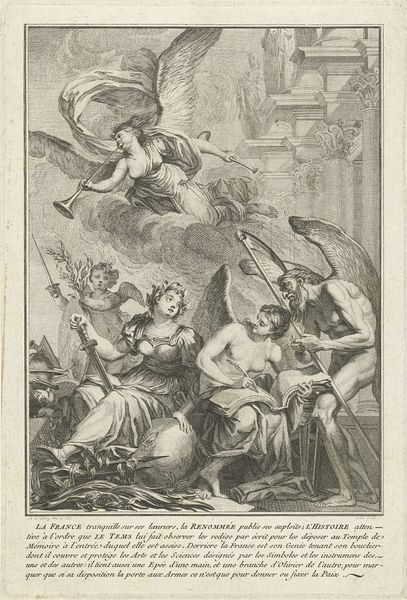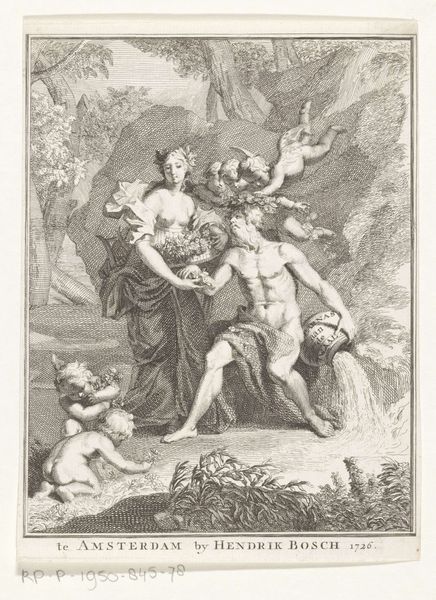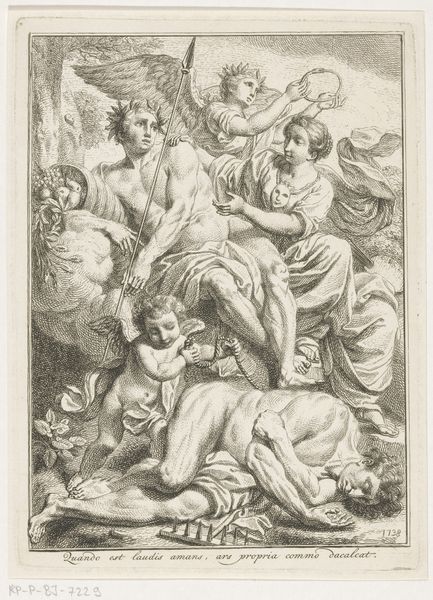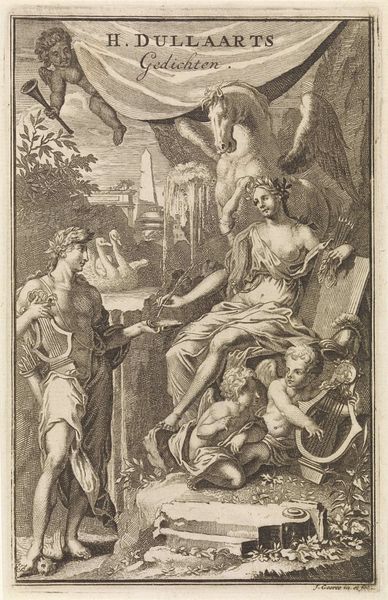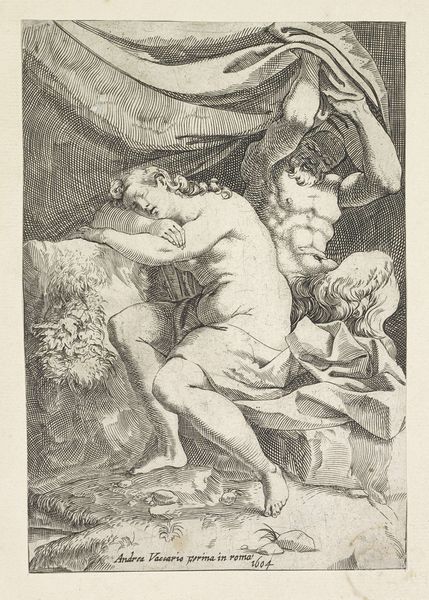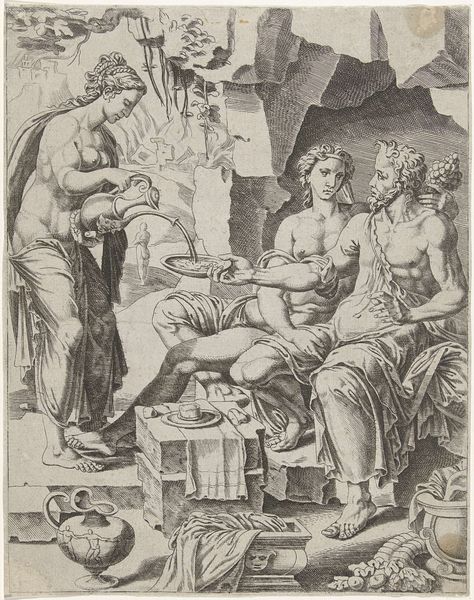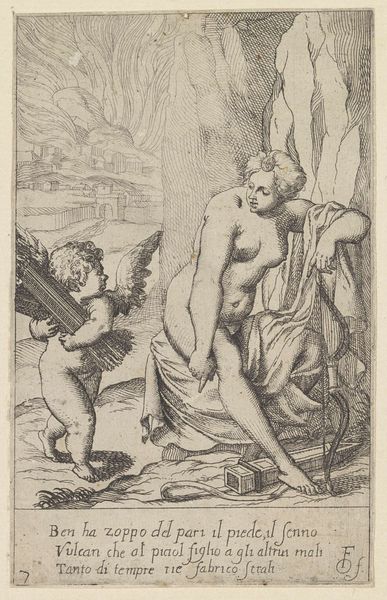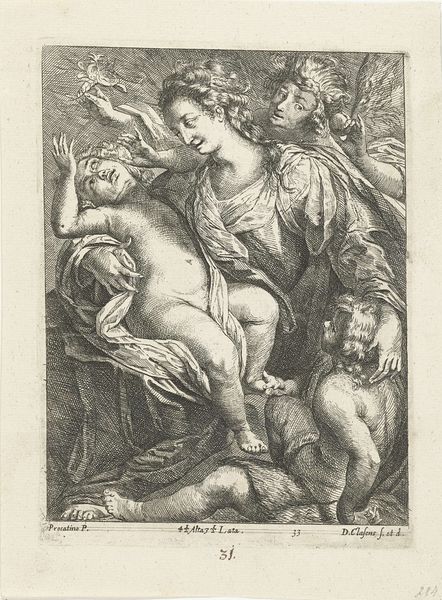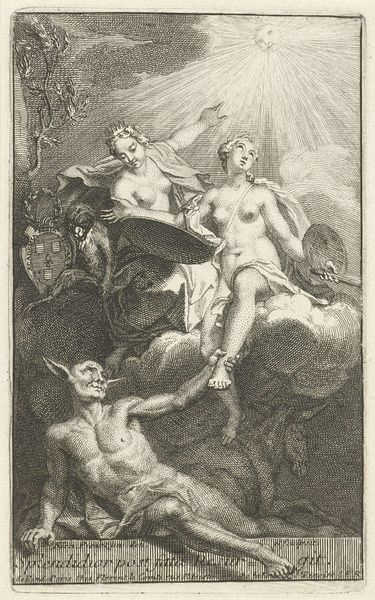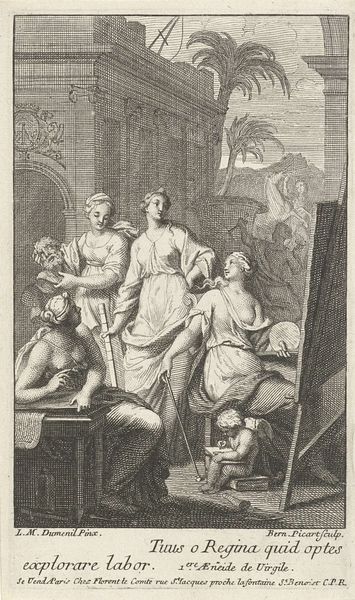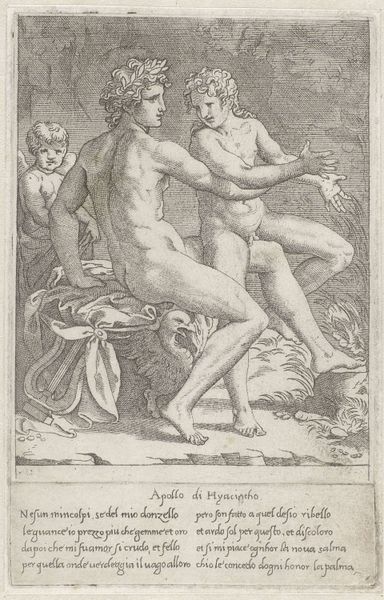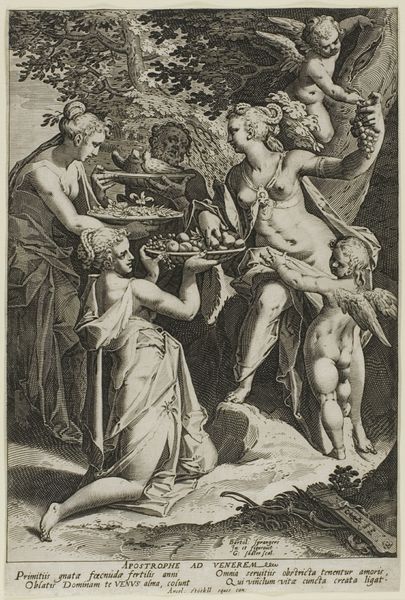
print, engraving
#
allegory
#
baroque
# print
#
landscape
#
figuration
#
history-painting
#
engraving
Dimensions: height 164 mm, width 126 mm
Copyright: Rijks Museum: Open Domain
Pieter van der Plas the second created this print of Ceres, Bacchus, and Venus sometime in the late 17th or early 18th century using etching. The printmaking process allows for the creation of multiples, which democratized images during this era. The etcher covers a metal plate with a waxy ground, then draws through it with a needle. Acid then bites into the exposed lines, creating grooves that hold ink. The plate is then cleaned, inked, and pressed onto paper, transferring the image. Van der Plas, like other old masters such as Rembrandt, was expert at this demanding, multi-stage process. His success depended on the division of labor and the market, indicative of early capitalism. The linear quality of etching lends itself to intricate detail, here used to depict the textures of skin, drapery, foliage, and hair. Ultimately, the print’s meaning is inseparable from its making and the social context it inhabits, highlighting the interplay between technical skill, artistic vision, and the wider world.
Comments
No comments
Be the first to comment and join the conversation on the ultimate creative platform.
